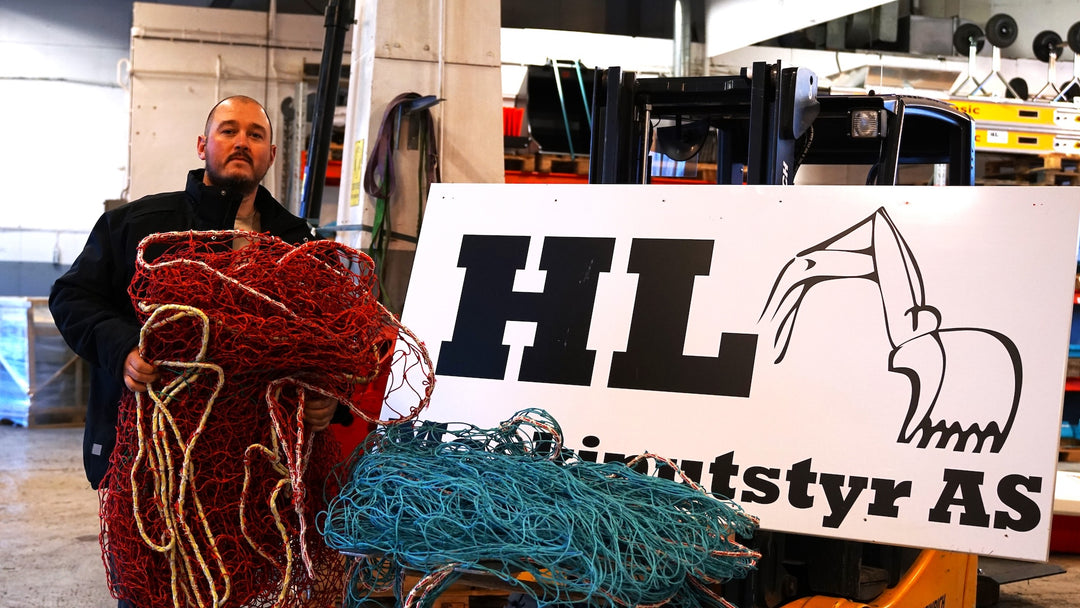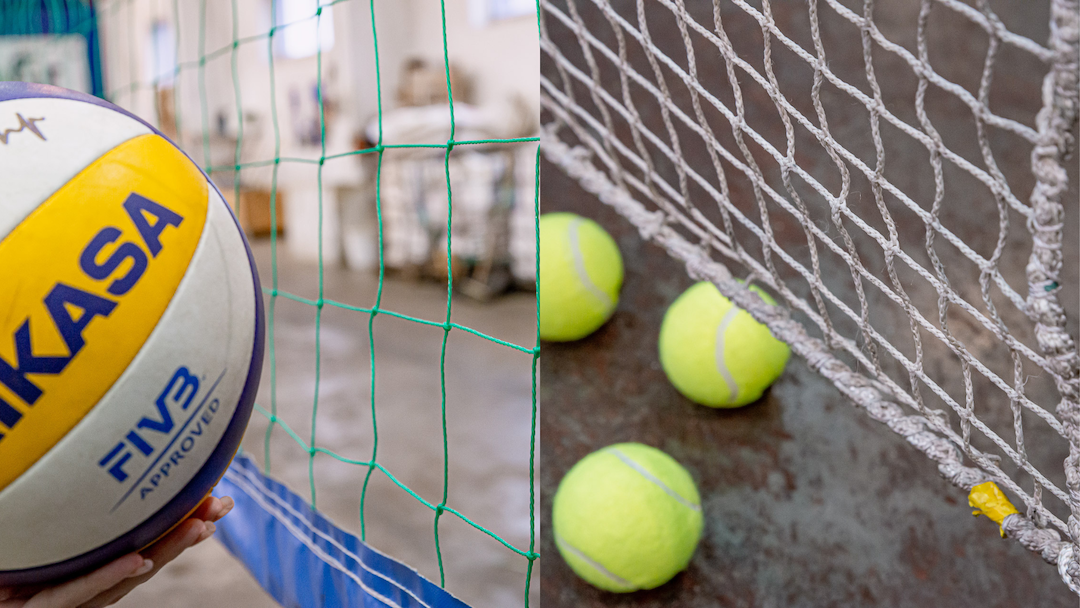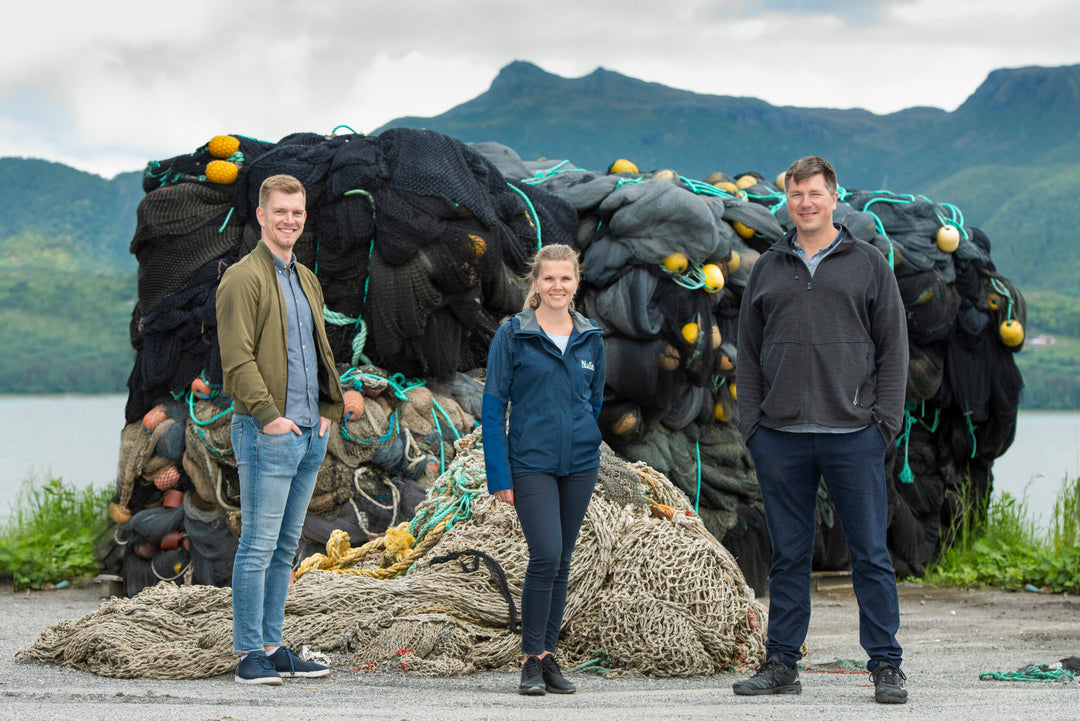Will reclaim all sports networks in Norway
A new national recycling scheme aims to recycle and replace the country's sports nets with fishing nets. Preferably all of them.
– This is entirely in line with our goal that all our materials will be sustainable or recycled in the future, says Iver Horrem in the Norwegian Volleyball Association.
They are one of the partners of the Bodø company Nofir (Norwegian Fishing Recycling), which since 2008 has collected and recycled gear from the fishing and aquaculture industry: a whopping 50,000 tons over the past ten years.
The company now wants to link the fishing industry with sports. One's waste will become another's treasure chest.
– It has become too easy to call oneself sustainable
The company will now embark on a national project, partly financed by the Norwegian Trade and Environment Fund, with the aim of establishing a national return scheme for old sports nets. In return, they will receive a recycled net from the fisheries.
The goal is to deliver 15,000 tons of nets from the fishing industry to the sport by spring 2024.
– Sports will be able to hand in their used nets, which will then be recycled and turned into new products, and in return will receive high-quality equipment that can now be reused. Most of us have walked past a football or volleyball field and seen how the large ball-catching nets are full of holes or have significant wear and tear, you don't have to worry about that with equipment from the fishing industry, says Øistein Aleksandersen, general manager of Nofir.
Aleksandersen believes the scheme will be one that benefits all parties, and a very concrete example of circularity and sustainability.
– “Everyone” wants to show that they are thinking about and working with sustainability, at the same time it has become too easy to call themselves sustainable without documenting this. Here, one will be able to link the fishing industry with sports, which both want to become more sustainable through a very tangible example of how circularity and recycling can work. It is a project that will serve all parties involved, not least the environment.
The picture on the right shows one of several nets the Norwegian Volleyball Association received. They also received side markings and posts made of different materials from the fishing and aquaculture industry. In the future, these may become products that are sold here on our pages.
Wide catchment area
The goal of the project is to reach all sports with high consumption of sports networks. Examples are football, volleyball, handball, golf and basketball.
At the top level of sports, football clubs such as Bodø/Glimt and LSK market themselves as sustainable clubs. Other sports also have sustainability as an important focus in their work, and the Norwegian Volleyball Federation has set itself a very specific goal:
– In the future, our goal is that all courts will come from sustainable materials, says Iver Horrem of the Norwegian Volleyball Association, adding:
– This project is a real hit for us, and we hope to be able to lead this development for the rest of the sports as well. Nofir has already shown the potential for such a scheme through our previous collaboration where the material for an entire beach volleyball court was recycled from the fishing and aquaculture industry. The only thing that has not been produced from discarded fishing gear is the ball itself.
Horrem believes that the potential for such a scheme, even with just a network, is very extensive. Looking at some of the macro figures gives an idea of the scope:
- There are about 1,000 permanent beach volleyball courts in Norway today, if all of these use, for example, ball stopper nets, this corresponds to approximately 2,750,000 m2 of net.
- For football, there are 199 artificial turf pitches, 177 ball pits and 130 hoops in the Oslo Football District alone. All of these use nets of various types, to a large extent.
- There are 186 registered schools in Oslo, and the vast majority use sports nets in connection with outdoor areas and gymnasiums.
- In addition, there are all other sports that use large and small nets.
Big ambitions and environmental savings
According to Nofir, 300 50-kilo sports nets will be delivered by spring 2024 – equivalent to 15,000 tons of netting. However, the ambition is far greater than this.
– The very best thing for the industry's equipment, for the fisheries, for sports and not least for the environment would have been to replace as many sports nets as possible – preferably all of them, says Aleksandersen.
He believes the environmental benefits will be enormous if the scheme grows and spreads to as many sports as possible.
– We are talking about very large environmental savings: from less plastic to the production of new nets for sports, we are talking about direct reuse from a fishing industry that is very concerned with sustainability, and we are talking about showing that the circular society is actually possible when we connect fisheries with sports, says Aleksandersen, adding:
– The latter is especially fun in a coastal society like Norway – what better way to show this?







